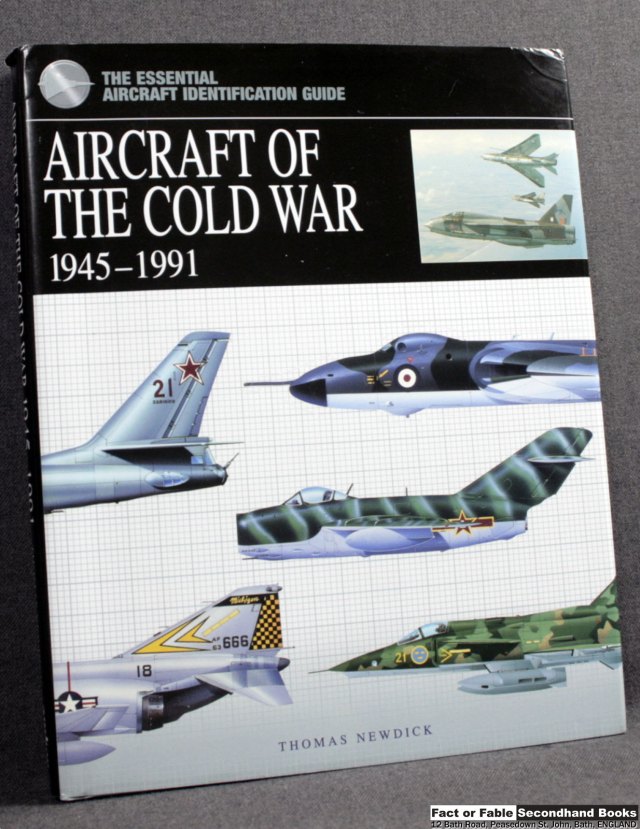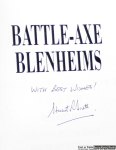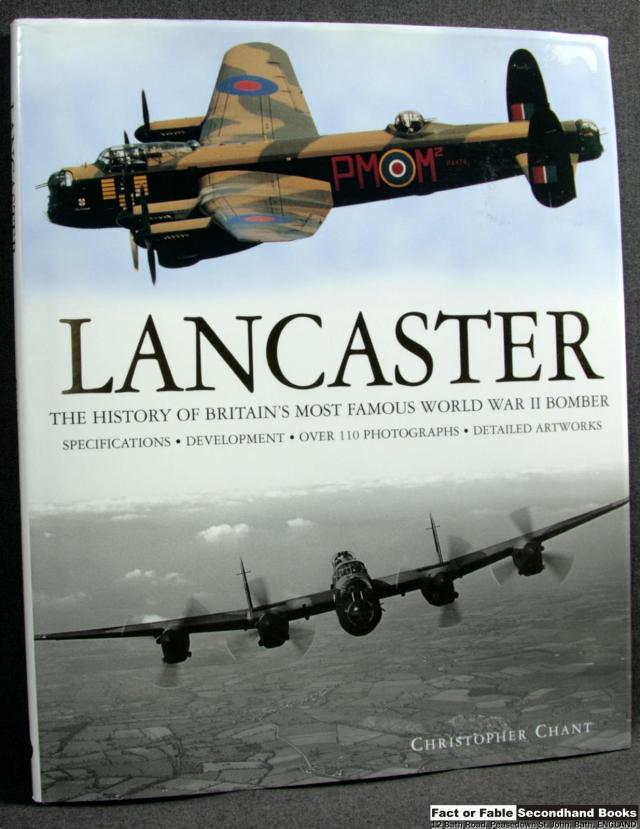Aircraft of the Cold War: 1945-1991 by Thomas Newdick lands on the shelves of my shop.
London: Amber Books, 2010, Hardback in dust wrapper.
Illustrated by way of: Black & White Photographs; Colour Drawings; Tables; Illustrated endpapers and blanks;
From the cover: Illustrated with detailed artworks of combat aircraft and their markings, The Essential Aircraft Identification Guide: Aircraft of the Cold War is a comprehensive study of the planes in service with NATO and the Warsaw Pact and their respective units from the end of World War II until the reunification of Germany. Arranged chronologically within each theatre, the book gives a complete organisational breakdown of the units of both sides, including the units and aircraft used in the proxy wars fought in Korea, Vietnam, the Middle East and elsewhere, as well as the front line in Germany. Each section includes a compact history of the role and impact of aircraft on the course of the Cold War, as well as orders of battle and lists of commanders and aces.
The Essential Aircraft Identification Guide: Aircraft of the Cold War features a wide range of aircraft types, including the numerous variants of well-known models, such as the MiG-15, the McDonnell Douglas F-15 and the Harrier, through to lesser-known aircraft such as the Lockheed P-80 and the Yak-28. Each aircraft profile is accompanied by exhaustive specifications, as well as details of individual and unit markings.
Packed with 250 colour profiles of every major type of combat aircraft from the era, The Essential Aircraft Identification Guide: Aircraft of the Cold War is an essential reference guide for modellers, military historians and aircraft enthusiasts.
In the Essential Aircraft Identification Guide series.
Very Good in Good+ Dust Wrapper. A little rubbing to the edges of the dust wrapper with a small nick to the head of the spine. Text complete, clean and tight.
Matching Pictorial boards. 192 pages. Index. 9¾” x 7¾”.
Of course, if you don’t like this one there are plenty more available here!










